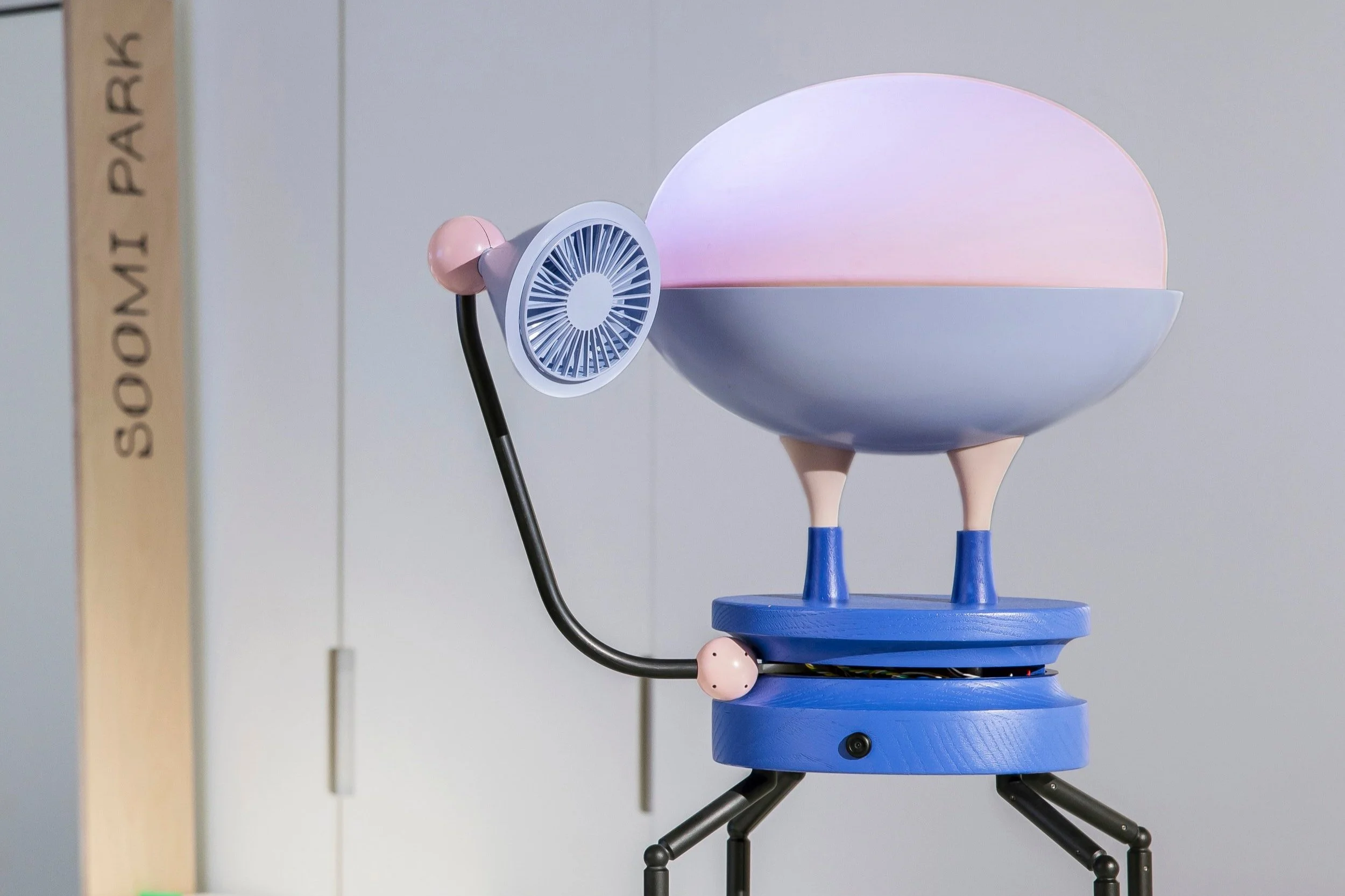Design fiction, robotics, and speculating about the future (S1E4)
The world we live in is increasingly technological, and as our everyday lives evolve and transform to mesh with new and emerging technologies, so do our interactions and relationships with people, objects and environments evolve and transform too.
In the field of interaction design, there is a growing ethical concern and a sense of responsibility to imagine the future and to anticipate the social, cultural and environmental repercussions of new designs put into this world – for example, how they might affect the ways in which we live, behave, move, think, communicate and relate to one another.
“Speculative Design”, made popular in the 90s by Anthony Dunne and Fiona Raby, is a critical design method that looks into the future and enables designers to imagine and seek a more desirable future rather than a dystopic one.
In this Season 1 Episode 4 of The Art in STEAM podcast, we are joined by Soomi Park — a London-based designer and artist from Seoul, South Korea, and a lecturer in the Design department at the Goldsmiths University of London.
Listen to the full episode on Spotify, Amazon Music and more.
[Femmes Designers] There's this fear that people have that robots are going to take over? Is this fear something that you've looked into for your research?
[Soomi Park] Yes, I did some speculative design workshops exploring my concept with people and in the roundtable discussion we talked about fear and the negative perception towards robots because of their fear, how sci-fi illustrated it: robots will take over your job, and later on there will be war, and because they are too intelligent, we can't fight against them sometimes. Sort of these things are embedded into people's minds because robots are introduced through fiction. So the concept itself came from fiction so it's very natural to react to this unknown and alive object that is similarly behaving like us and talking like us, and being intelligent like us is scary. So, then I discuss embarrassment as a very central social emotion which could reduce the negativity concept. Embarrassment is something people think is negative because I don't want to experience it, this is quite painful. I I fall in front of many people, I feel embarrassed, extremely.
[FD] Shame?
[SP] It's not shame. It’s a bit different from shame. Shame is like targeted to the self, you have a target, and you didn't achieve it, and then it's much a more self-orientated feeling. Whereas embarrassment is very sociable because you immediately react, your behaviour changes, and your way of speaking changes. So, say, as an example, you fall in front of many people; what would you do? You either like to try hiding yourself or, oh, what, why did I do that? Or, you know, apologetic, I'm so sorry. You know, even you don't have to apologise. So, some reaction always comes out. And then people who see their reaction, this apologetic reaction over, like, covering their faces, usually really empathise the situation and say, Oh, no, that's fine. I've been there. So that kind of creates this bonding feeling because I've been there. Also, I know how you feel exactly. There's a weird connection it created. So yes, it is a very painful emotion for an individual to experience. On the social side, it doesn't harm any social standard of yourself. Actually, it gives a better impression to others.
[FD] Right. And so, in a way, it connects you to the robot, and you treat it better. Earlier you spoke about science fiction, but we'll discuss design fiction. What is the line between science fiction and design fiction? Is there a line, or is it the same?
[SP] In my view, design is a central thing. We use fiction as a sort of medium and then design is also a part of the medium to illustrate the story. Design fiction. It's about believability and plausibility. And then science fiction. Yes. Still, it's because of storytelling, it has to be plausible enough. At the same time, it can go far, far like in movies. So I'm unsure if I know enough about the difference between design fiction and science fiction, but I guess the centre point is a bit different, design is in the centre.

